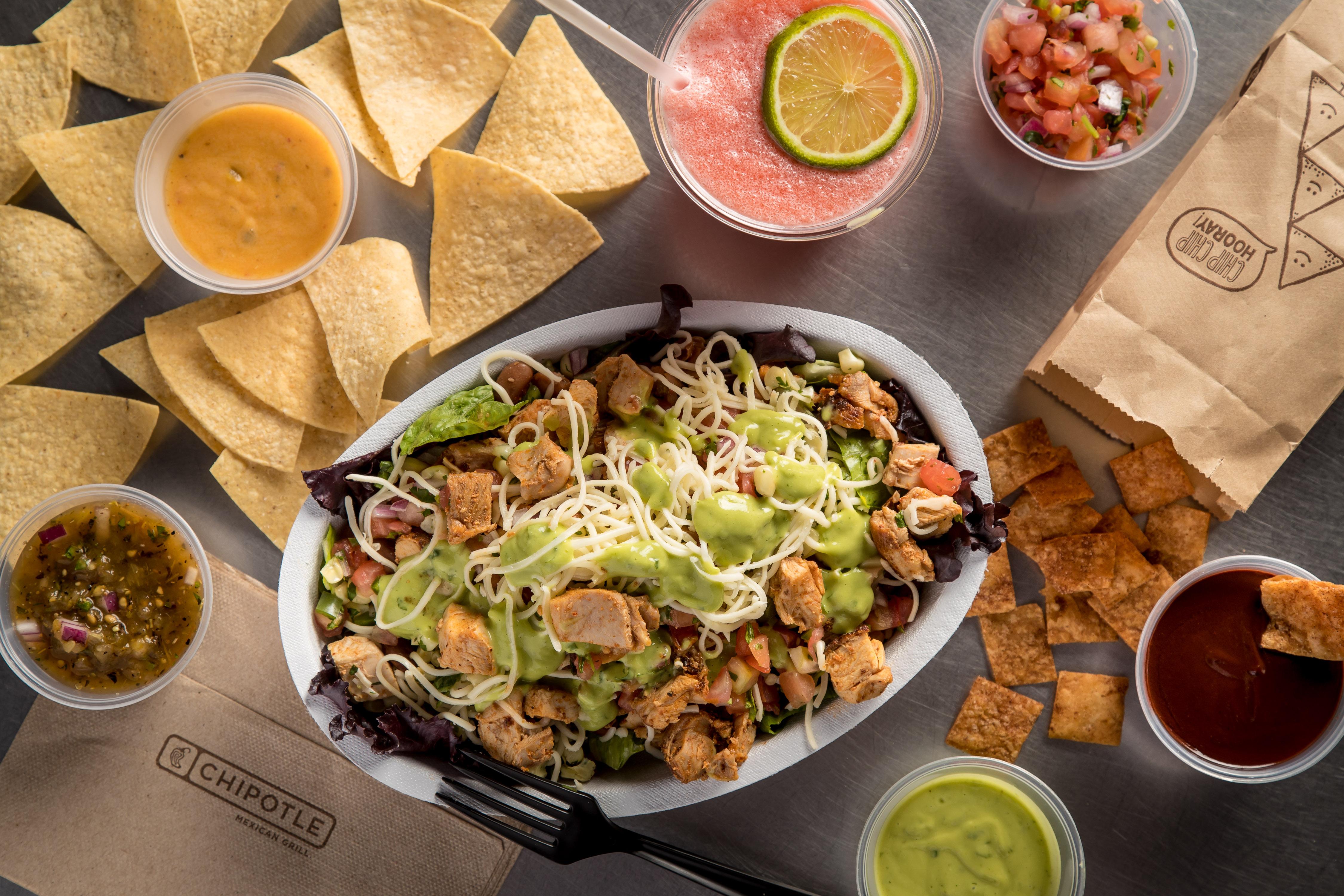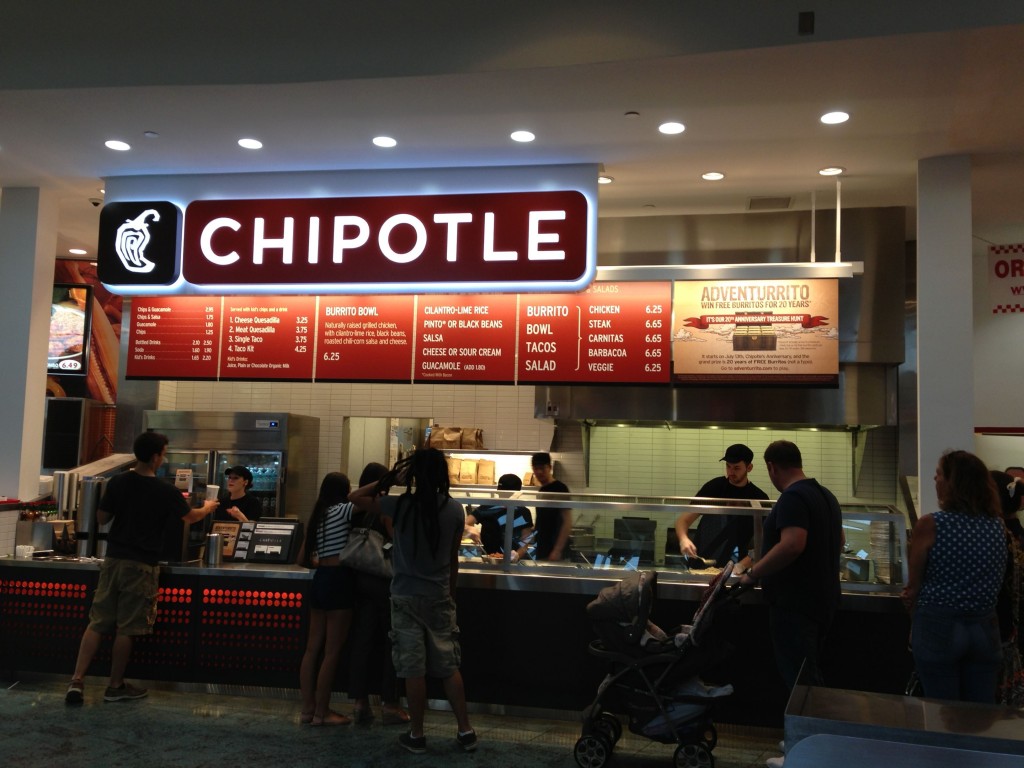Chipotle’s Business Model and Growth Strategy: Chipotle Stock

Chipotle Mexican Grill, a fast-casual restaurant chain, has built its success on a simple yet effective business model centered around fresh ingredients, customizable menu options, and a commitment to sustainable practices. This strategy has propelled the company’s growth, attracting a loyal customer base and establishing it as a leader in the fast-casual dining industry.
Chipotle’s Core Business Model
Chipotle’s core business model revolves around its commitment to fresh, high-quality ingredients and its customizable menu options. The company prioritizes sourcing ingredients from sustainable farms and suppliers, ensuring that its food is both delicious and ethically produced. This commitment to quality resonates with health-conscious consumers seeking a dining experience that balances taste and sustainability. Chipotle’s menu is designed to be simple and customizable, allowing customers to create their own burritos, bowls, tacos, and salads by choosing from a variety of fresh ingredients, including meats, beans, rice, salsas, and toppings. This customizable approach caters to individual preferences and dietary needs, enhancing the customer experience and fostering brand loyalty.
Chipotle’s Growth Strategy, Chipotle stock
Chipotle’s growth strategy focuses on several key areas, including expansion, menu innovation, and digital initiatives.
Expansion Plans
Chipotle’s expansion plans involve opening new restaurants in both existing and new markets. The company strategically selects locations that align with its target customer base and have the potential for strong sales. Chipotle’s expansion strategy includes both company-owned and franchised restaurants, allowing the company to reach a wider audience and increase its market share.
New Menu Items
Chipotle continuously innovates its menu by introducing new items and flavor combinations to cater to evolving customer preferences and attract new customers. The company’s commitment to quality and fresh ingredients extends to its new menu items, ensuring that they meet the high standards expected by its loyal customer base.
Digital Initiatives
Chipotle has embraced digital initiatives to enhance the customer experience and drive sales. These initiatives include online ordering, mobile payments, and a robust loyalty program.
Chipotle’s Marketing Campaigns and Customer Loyalty Programs
Chipotle has launched several successful marketing campaigns that have resonated with its target audience and boosted brand awareness. These campaigns often feature themes of fresh ingredients, customization, and sustainability, aligning with the company’s core values.
Marketing Campaigns
Chipotle’s marketing campaigns are known for their creativity and humor, often using social media and digital platforms to engage with customers. One notable example is the “Chipotle Real Food” campaign, which highlighted the company’s commitment to sourcing fresh, high-quality ingredients. This campaign resonated with health-conscious consumers and helped to solidify Chipotle’s reputation as a leader in the fast-casual dining industry.
Customer Loyalty Programs
Chipotle’s customer loyalty program, Chipotle Rewards, provides customers with exclusive perks and rewards for their patronage. The program allows customers to earn points for every purchase, which can be redeemed for free food or other rewards.
Financial Performance and Key Metrics

Chipotle Mexican Grill has consistently demonstrated strong financial performance, characterized by robust revenue growth, healthy profit margins, and consistent earnings per share growth. This success is attributed to its unique business model, emphasis on fresh ingredients, and dedicated customer base.
Revenue Growth and Profitability
Chipotle’s revenue has grown steadily over the past few years, driven by new restaurant openings and increased same-store sales. The company’s revenue reached $8.5 billion in 2022, representing a significant increase from $7.5 billion in 2021. This growth is attributed to a combination of factors, including increased demand for its food, successful marketing campaigns, and a focus on digital ordering and delivery.
Chipotle’s gross profit margin, which measures the percentage of revenue remaining after accounting for the cost of goods sold, has remained consistently high, hovering around 35%. This reflects the company’s efficient operations and ability to control food costs. The company’s operating profit margin, which measures profitability after accounting for operating expenses, has also been healthy, indicating that Chipotle is effectively managing its costs.
Key Financial Metrics
Investors should monitor several key financial metrics to assess Chipotle’s performance and future prospects. These metrics provide insights into the company’s operational efficiency, growth potential, and profitability.
- Same-Store Sales Growth: This metric reflects the performance of existing restaurants and is a crucial indicator of the company’s ability to attract and retain customers. Chipotle has consistently achieved positive same-store sales growth, demonstrating its brand strength and customer loyalty. In 2022, the company reported a same-store sales increase of 10.1%, indicating strong customer demand and effective marketing strategies.
- Labor Costs: Labor costs are a significant expense for Chipotle, representing a considerable portion of its operating expenses. The company’s ability to manage labor costs effectively is crucial for maintaining profitability. Chipotle has been focused on optimizing its labor model by investing in technology and streamlining operations to reduce labor costs.
- Food Costs: Food costs are another critical expense for Chipotle, as the company uses fresh, high-quality ingredients. The company’s ability to control food costs is essential for maintaining profitability and providing value to customers. Chipotle has implemented strategies to manage food costs, including negotiating favorable pricing with suppliers and reducing food waste.
Comparison to Competitors
Chipotle’s financial performance compares favorably to its competitors in the fast-casual restaurant industry. The company has consistently outperformed its peers in terms of revenue growth, profit margins, and earnings per share. This success is attributed to its unique brand positioning, focus on fresh ingredients, and effective marketing strategies.
For example, in 2022, Chipotle’s revenue growth exceeded that of its major competitors, such as Panera Bread and Shake Shack. The company’s profit margins also remain higher than its peers, reflecting its ability to control costs and generate strong returns.
Chipotle’s commitment to using fresh, high-quality ingredients, combined with its focus on digital ordering and delivery, has positioned the company as a leader in the fast-casual restaurant industry.
Industry Trends and Competitive Landscape

The fast-casual restaurant industry is experiencing rapid growth, driven by evolving consumer preferences, technological advancements, and increasing competition. Chipotle Mexican Grill, a leading player in this segment, faces both opportunities and challenges in this dynamic environment.
Current Trends in the Fast-Casual Restaurant Industry
The fast-casual restaurant industry is characterized by several key trends that influence the strategies of players like Chipotle.
- Focus on Fresh and High-Quality Ingredients: Consumers are increasingly demanding fresh, high-quality ingredients, particularly those sourced locally and sustainably. Chipotle’s commitment to using fresh, whole ingredients aligns with this trend.
- Customization and Personalization: Consumers want to personalize their dining experience, choosing from a variety of options and customizing their meals. Chipotle’s build-your-own burrito model caters to this trend.
- Technological Advancements: Digital ordering, mobile payments, and delivery services are becoming increasingly popular. Chipotle has embraced these technologies, offering online ordering, mobile payment options, and partnerships with delivery platforms.
- Emphasis on Value and Affordability: Consumers are price-sensitive and seek value for their money. Chipotle’s pricing strategy, which offers customizable meals at a relatively affordable price point, appeals to this segment.
- Health and Wellness Concerns: Consumers are increasingly aware of their health and seek food options that are nutritious and wholesome. Chipotle’s focus on fresh, minimally processed ingredients aligns with this trend.
Competitive Landscape
Chipotle faces competition from a wide range of fast-casual restaurants, including:
- Panera Bread: Known for its bakery-cafe concept, Panera Bread offers a wide variety of sandwiches, salads, soups, and baked goods. Its focus on fresh ingredients and customizable options makes it a strong competitor to Chipotle.
- Subway: Subway is a global fast-food chain known for its customizable sandwiches. Its extensive menu, affordability, and convenience make it a major competitor in the fast-casual space.
- Shake Shack: Shake Shack is a popular burger chain known for its premium burgers, fries, and milkshakes. Its focus on high-quality ingredients and a unique dining experience makes it a competitor to Chipotle’s premium positioning.
Strengths and Weaknesses of Chipotle
Chipotle has several strengths that have contributed to its success:
- Strong Brand Recognition and Loyalty: Chipotle has built a strong brand reputation based on its commitment to fresh ingredients, customizable meals, and a unique dining experience. This has fostered a loyal customer base.
- Focus on Fresh Ingredients: Chipotle’s commitment to using fresh, whole ingredients is a key differentiator in the fast-casual space. This resonates with consumers who are increasingly concerned about food quality and health.
- Customizable Menu: Chipotle’s build-your-own burrito model allows customers to personalize their meals, catering to individual preferences. This customization factor is a key driver of customer satisfaction.
- Strong Digital Presence: Chipotle has embraced digital ordering, mobile payments, and delivery services, making it convenient for customers to order and pay for their meals.
However, Chipotle also faces certain weaknesses:
- Higher Pricing: Compared to some competitors, Chipotle’s pricing is higher. This can be a barrier to entry for price-sensitive consumers.
- Limited Menu Options: Chipotle’s menu is relatively limited compared to some competitors. This can limit its appeal to customers seeking a wider variety of options.
- Food Safety Concerns: Chipotle has faced several food safety challenges in the past, which have negatively impacted its brand reputation. The company is working to improve its food safety protocols, but these concerns remain a potential risk.
Potential Threats and Opportunities
Chipotle faces several potential threats in the future, including:
- Increased Competition: The fast-casual restaurant industry is highly competitive, with new entrants and established players constantly vying for market share. This competition could put pressure on Chipotle’s pricing and profitability.
- Economic Downturn: In an economic downturn, consumers may cut back on discretionary spending, including dining out. This could negatively impact Chipotle’s sales and revenue.
- Rising Food Costs: Increasing food costs could force Chipotle to raise prices, which could alienate price-sensitive consumers.
Chipotle also has several opportunities for growth in the future:
- Expanding into New Markets: Chipotle has the potential to expand into new domestic and international markets, increasing its reach and customer base.
- Developing New Menu Items: Chipotle can introduce new menu items to cater to evolving consumer preferences and attract new customers.
- Enhancing Digital Capabilities: Chipotle can continue to enhance its digital capabilities, offering more convenient and personalized ordering experiences.
The rise and fall of Chipotle stock mirrors the ebb and flow of our own lives, a constant dance between growth and potential. As we seek nourishment for our bodies, we also seek sustenance for our souls. To truly understand the trajectory of Chipotle stock, one must delve deeper into its core values and the impact it has on the world, and this exploration can be found in chipotle stock.
The lessons learned from this journey can then be applied to our own lives, helping us navigate the complexities of our own personal growth and potential.
The trajectory of Chipotle stock, like the ebb and flow of a river, is influenced by various factors. One such factor is the leadership style of other successful companies, like the ceo starbucks , who navigates the turbulent waters of the coffee market with a keen eye on customer experience and innovation.
Chipotle, in its own right, seeks to cultivate a similar environment, focusing on sustainable practices and a commitment to quality ingredients, which ultimately impacts the stock’s performance.
